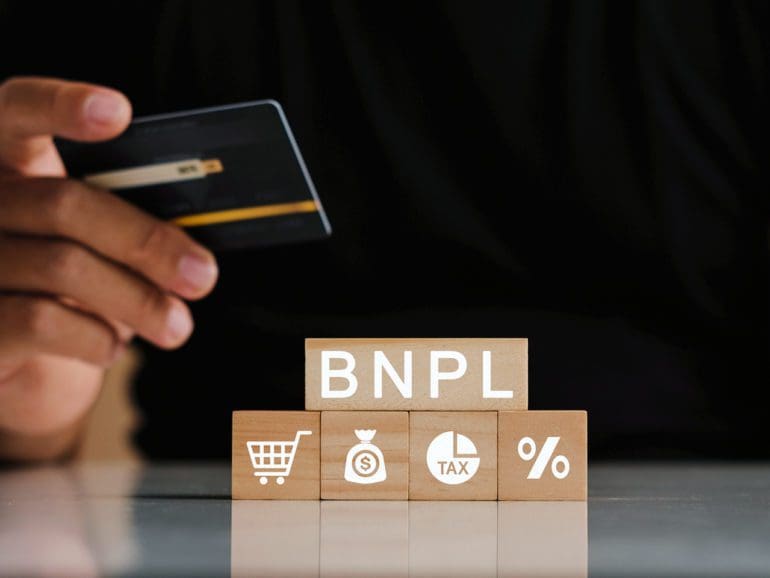The following is a guest post from Yaacov Martin, CEO and Co-Founder of Jifiti.
BNPL fintechs are under increasing economic and legal pressure due to growing competition, regulatory probes, and concerns about consumer debt and lending practices.
Therefore, consolidation in the BNPL market skyrocketed in 2021: Block (formerly Square) acquired AfterPay, and Australia-based BNPL fintech Zip agreed to buy rival Sezzle.
Due to the fall out of BNPL fintech losses and their shares dropping, there’s a tremendous opportunity for consumer financing traffic to go back to banks. They can offer unique BNPL solutions that are as regulated as credit products.
By 2026, BNPL payments are expected to account for almost a quarter of all global e-commerce transactions, according to Juniper Research, with banks poised to lead the way.
So, what changes can we expect to see in the BNPL industry this year and beyond?
Banks taking a proactive – not defensive – approach
Are banks stepping into BNPL as a defensive move against fintechs?
Banks were initially slow to respond but have been rapidly seeking market entry after seeing the long-term value in point-of-sale (POS) financing, both as a merchant and customer acquisition tool and value-add to existing customers.
Some global banks adopt BNPL offerings to protect their turf against fintech companies that leverage BNPL as a stepping stone to becoming digital banks. But defensive moves generally put companies behind the curve.
Banks that view BNPL proactively as a means to engage with customers that otherwise would not apply for consumer financing will find themselves ahead of the game.
Split pay, where consumers split their purchase amount into typically three or four repayments, is one BNPL product that attracts consumers that generally would not apply for consumer loans. It is not a loan but rather a payment product that uses an existing credit card.

Companies playing to their strengths
There’s been a blurring of lines up until now in the fintech space, especially regarding BNPL.
Technology companies have attempted to replace balance sheet lenders and step outside of their core competencies.
But when companies focus on their principal capabilities, that’s when the best results are cultivated.
Banks that partner with a third-party vendor or fintech infrastructure solution for advanced technology are on track to build a sustainable BNPL model. That’s because each entity involved sticks to its core competencies.
Banks can continue doing what they do best – balance sheet lending – and technology companies can invest in developing their cutting-edge tech.
Merchants with an appetite for customer retention
Merchants know that letting a third party into their customer journey and checkout can come with heavy costs.
They are increasingly becoming aware of the risks of working with direct-to-consumer BNPL providers to sacrifice customer relationships and give up data ownership.
By offering a white-labeled solution from banks and lenders, merchants can retain their customers and data and build their brand.
For example, Wayfair and BJ’s Wholesale Club are retail partners of Citizens Pay and are already using this kind of BNPL solution.
Fair, affordable, and responsible lending practices
This topic is vital in light of the recent US Consumer Financial Protection Bureau (CFPB) probe, announced in December 2021.
Retailers no longer want to let a large, external fintech provider dictate the rules for their payment solutions, nor do they want to sacrifice their brand reputation if something goes wrong due to irresponsible lending practices.
Instead, they are looking to strengthen consumer purchasing power with access to responsible and affordable financing.
Therefore, we will see quite a dramatic merchant shift to offer regulated BNPL products through banks or white-label BNPL fintech providers that comply with regulatory best practices and promise the customer financial responsibility and transparency.
No more one-size-fits-all BNPL solutions
As consumers with a wide range of credit profiles are purchasing various products at different ticket sizes, it is clear that out-the-box BNPL offerings from fintechs won’t suffice.
To boost customer retention, acquisition, and conversion, merchants need optionality to cater to every use case, consumer journey, and geographical market instead of plastering checkout solutions.
Merchants and banks are now turning to white-labeled platforms where they can gain the ability to provide a full suite of BNPL products, from installment loans and lines of credit through split payments.
According to merchant-specific requirements and branding, there is an increasing demand for personalized payment solutions.
We will see the most significant online retailers seeking multi-lender or waterfall BNPL solutions as not every consumer is eligible for prime lender financing from tier-1 banks and lenders.
Waterfall consumer financing works by cascading consumer applicants from prime lenders to secondary lenders via a single funding application to increase BNPL approval rates and customer conversions.
Being part of a multi-lender network will enable banks to cater to the diverse needs of merchants and consumers.
Banks will be able to approve and serve consumers who meet their specific credit profile requirements while maintaining merchant and consumer satisfaction regarding BNPL acceptance rates.
In my experience, banks often look for solutions that are easy to integrate yet highly configurable, with different modules to move around and use as needed.
With their well-earned reputation and deep roots in the financial industry, banks that offer agile BNPL solutions to meet consumer and merchant demand for customization will be the most sustainable BNPL model.
Banking on BNPL in 2022
These trends, coupled with growing interest from the regulators, uniquely position banks to compete with fintechs for merchants and consumer interest.
While BNPL fintech companies have been experiencing some tremors lately, with fintech shutdowns and share drops, Buy Now Pay Later solutions from banks are here to stay.


